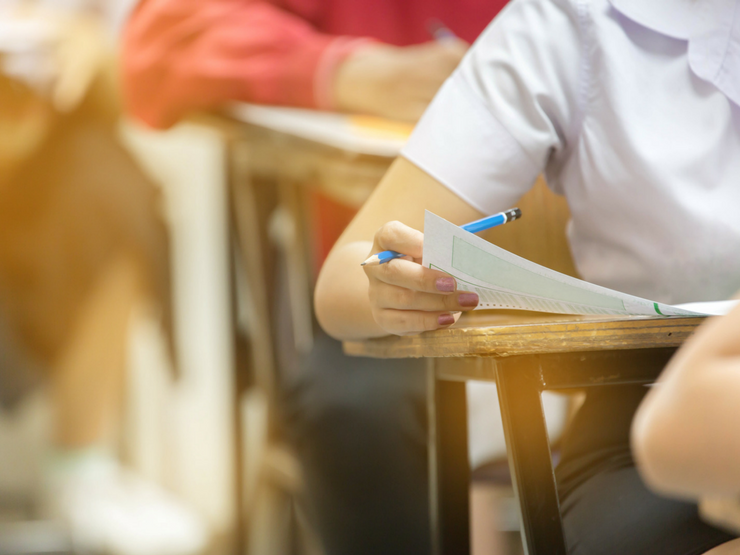Online retail sales growth slowed in May following a fairly strong April


Insight
Student wellbeing on the agenda for schools.

The 2019 NAB Independent Schools Survey gives Australian secondary school students a voice across a range of important issues shaping their lives, their school and their country. Over 400 students shared their opinions on important topics such as wellbeing and how schools could better manage their anxieties and happiness, the adequacy of the current curriculum to prepare them for life after school, attitudes to work, starting a business and the future, and what our leaders should really focus on.
If there’s just one statistic worth noting in this report perhaps it’s this -1 in 3 young Australians identified as being “highly anxious” and 1 in 4 “very unhappy”. While it’s unclear whether anxiety is on the rise or whether we simply know more and speak up more about it, students were united as to the primary cause – the growing pressure of schoolwork, tests and grades. Other key worries include: mental health; future job prospects (particularly boys); the pressure of getting into a chosen course, looks and appearance (particularly girls); not being successful and money (particularly boys); and friendships (particularly girls).
While awareness of school wellbeing programs is high, students were not convinced these programs justify the time away from study, labelling them, perhaps unfairly, as “tokenistic”, “irrelevant”, “outdated”, “unqualified”, “boring” and ”poorly executed”. It is particularly concerning that those students who identify as “highly anxious” were among those who were least positive about the value of school wellbeing programs. When asked what more schools could be doing, students spoke of better co·ordination of homework, SACs and deadlines across subjects, more targeted mental health programs for individuals, less rigid policies around uniforms, phones and appearance, programs outside school to build trust, more freedom to listen to music, more spaces to socialise and relax with different grade and year levels, more inclusiveness of all religions and support animals.
Students were also unconvinced that the current school curriculum is adequately preparing them for life beyond school, particularly in areas such as financial literacy, technology and “real world” experiences. Other suggestions include: more individual career guidance: start-up business training; more freedom to manage time. mock job interviews, more extra-curricular activities and broader interpretations of “intelligence”. In terms of building skills for the future, students highlighted more personalised learning, recognition of different learning styles, more feedback post-tests/assignments, leadership opportunities tor all, public speaking being taught as a lite-skill rather than another test and a locus on passions rather than careers.
Outside of school, young Australians questioned whether they are being heard by Government, calling for the legal voting age to be lowered to 16 years. When asked to look to the future, they were only mildly optimistic about their employment prospects, the Australian economy, the overall direction of our country and whether they would have a better life than their parents. Students were even less optimistic about their voice being heard and their ability to afford a house (particularly girls).
Notwithstanding their concerns, what emerges is a well-informed, focused and entrepreneurial generation. Most students (7 in 10) knew what field they wanted to work in. Around 1 in 2 had a part-time job (and more girls than boys), working on average around 19 hours per week. Money was important, but 7 in 10 also viewed work as an opportunity to demonstrate responsibility and gain experience. Over 1 in 3 wanted to start a business while still at school, climbing to almost 1 in 2 when they left, with boys and girls equally keen to do so.
But, some interesting differences by gender also emerge. Significantly, when asked to self-assess their level of skills across a range of areas, girls have overtaken boys in all areas, except coding, computer programming and sport. The gap was most pronounced for writing and expression, reading, presenting in class or public speaking and interpersonal skills. This is both encouraging (for girls) and concerning (for boys). That said, it was also noteworthy that more boys still expect to work in STEM industries compared to girls. It was also interesting that boys received noticeably more pocket-money than girls ($37 vs $26) – perhaps an early indicator of gender pay inequality? And, significantly more girls than boys did chores such as laundry and ironing, the dishes, cooking and preparing meals and grocery shopping. Boys were much more likely to mow the lawn, work in the garden, wash and clean the car and take out the rubbish.
Anxiety is among the most important societal issues facing the developed world today and our schools are at the frontline managing its complexity and the implications for our children. Encouragingly, while students were vocal in their concerns, they were also highly engaged around opportunities to improve academically and emotionally.
For more information refer to the attached:
© National Australia Bank Limited. ABN 12 004 044 937 AFSL and Australian Credit Licence 230686.